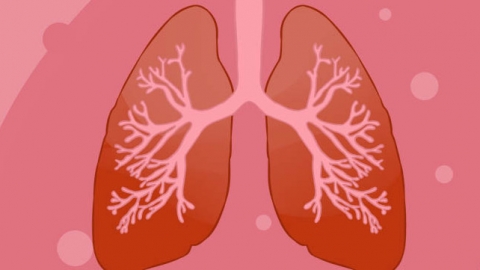What are the common causes of benign pulmonary nodules?
Generally, benign pulmonary nodules may be caused by common factors such as genetic predisposition, environmental factors, rheumatoid arthritis, tuberculosis, and pulmonary cysts. Symptomatic management usually involves general treatment and medication. If discomfort symptoms occur, prompt medical attention is advised. Detailed analysis is as follows:

1. Genetic Factors
Some pulmonary nodules are associated with heredity. Genetic factors may lead to abnormal lung cells or tissue structures, resulting in nodule formation. Accompanying symptoms may include dyspnea, cough, and sputum production. It is recommended to maintain a healthy lifestyle, quit smoking, avoid secondhand and thirdhand smoke, and reduce exposure to harmful gases and dust.
2. Environmental Factors
Long-term exposure to air pollution, chemicals, or radioactive substances may cause mutations in lung cells, leading to nodule formation, which may be accompanied by respiratory irritation symptoms such as cough and sputum production. Patients are advised to maintain good lifestyle habits and avoid exposure to harmful environments.
3. Rheumatoid Arthritis
Rheumatoid arthritis is an immune system disorder that can damage lung tissue, trigger inflammatory responses, and result in nodule formation. Symptoms usually include joint pain, skin rash, fever, and others. It is recommended to follow medical advice and use medications such as methylprednisolone tablets, cyclosporine capsules, and azathioprine tablets to alleviate symptoms.
4. Tuberculosis
After Mycobacterium tuberculosis invades the lungs, it triggers an immune response forming granulomas known as tuberculous nodules. Symptoms may include low-grade fever, night sweats, fatigue, and weight loss. Patients should follow doctors' instructions to use anti-tuberculosis drugs such as isoniazid tablets, rifampicin capsules, and ethambutol hydrochloride tablets for standardized anti-tuberculosis treatment.
5. Pulmonary Cysts
Residual tissue after congenital or acquired pulmonary cyst rupture may form nodules. Cystic pulmonary nodules may be asymptomatic or accompanied by mild chest pain. Monitoring nodule changes is recommended, and surgical removal, such as cystectomy or cyst internal drainage, may be performed when necessary.
In daily life, maintaining good lifestyle habits such as moderate exercise and regular sleep patterns is recommended to enhance physical health and reduce disease occurrence.





